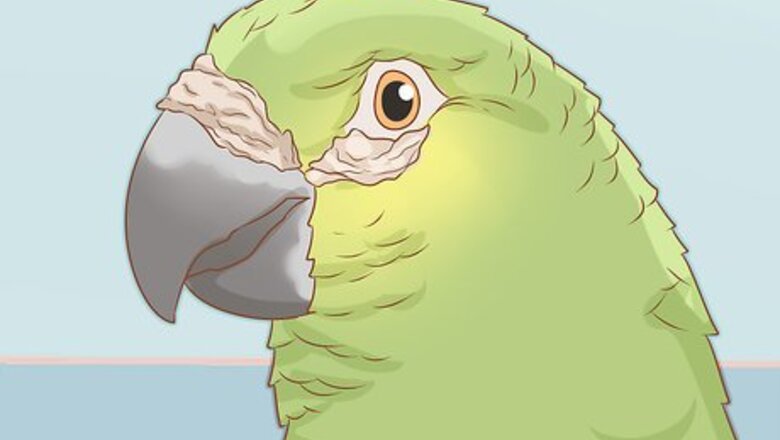
views
Recognizing the Symptoms of Mites on Your Bird
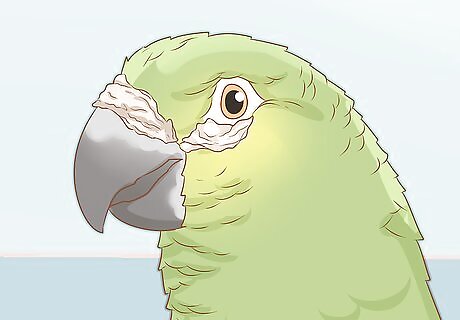
Check around your bird’s eyes and beak for any crusty looking area. Mites affect your bird by burrowing into their skin, often in the area around their eyes and beak. This is known as an infestation of Knemidokoptes pilae, or burrowing face mites. In the early stages of this infestation, the mites are barely visible and will not affect the overall condition of your bird. But you may notice crusty plaques in the corners of your bird’s beak or on your bird’s beak. These bright white deposits will become thicker and more crusty as the mites continue to burrow. The upper area of your bird’s face will appear to have deep burrows or holes, as the mites will dig tunnels or paths in your bird’s skin. The skin around your bird’s eyes and beak will eventually appear cavernous or full of thick, deep tunnels that appear crusty and irritated.
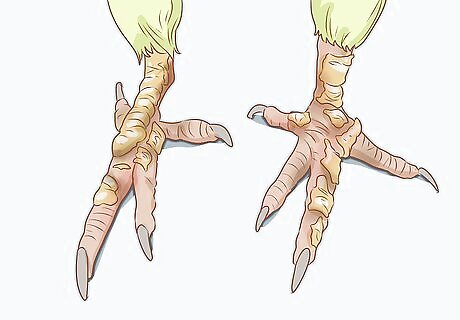
Examine your bird’s legs for scaly, irritated skin. Mites can also affect your bird’s legs, known as scaly leg mites or Knemidokoptes mutans. The mites will burrow into the skin of your bird’s legs and lay eggs inside your bird’s skin. As a result, your bird’s legs may appear very dry, scaly, and show white deposits that may turn crusty. The mites release metabolites that severely irritate your bird’s skin, resulting in swelling and scaly skin, or rashes.

Note if your bird is restless at night or preens excessively. Mites come out to feed at night, so your bird may be very restless or irritated during the night as a result of bites from the mites. Your bird may also be restless or appear to try to itch his skin against his cage during the day as the mites continue to burrow. In an attempt to remove the mites, your bird may also groom or preen himself excessively, though the mites cannot be removed by grooming or preening.
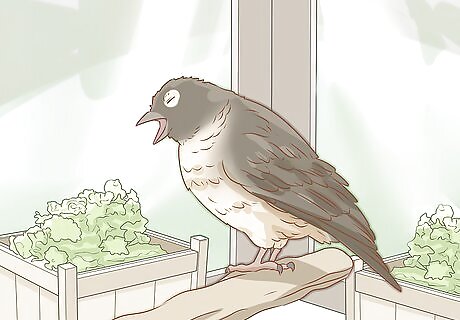
Check if your bird is coughing, sneezing, open-mouth breathing, or has difficulty breathing. Mites can also burrow and infest your bird’s trachea, air sacs, bronchi or sinuses, resulting in symptoms like coughing, sneezing, or difficulty breathing. Your bird may also start to open-mouth breathe, almost as if he is gasping for air. Watch him when he breathes in his cage for any signs of difficulty breathing or breathing with an open mouth. Your bird may also experience weight loss due to the mite infestation, and he may make clicking sounds or have a change in vocal sounds a result of mites burrowed in his respiratory system.
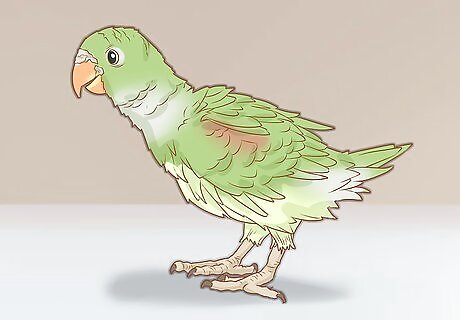
Look for any feather damage or feather loss. Your bird may have noticeable feather damage, with missing patches of feathers or piles of feathers in his cage. This is as a result of excessive preening or cleaning by your bird in an attempt to remove the mites from his skin. Gain peace of mind through education. "As a brand new parakeet owner, I was clueless about mites before reading this. Outlining the symptoms in a simple way helped me learn what to watch for in my birds' eyes, beaks, and legs. Doing regular checkups gives me peace of mind that I can spot health issues early." - Janelle S. Take preventative action for your pet's health. "Mites were something I'd never thought about with my parrot. Realizing he could be vulnerable made me want to play it safe, so I'm taking him to the vet just in case. I'd much rather prevent an infestation than deal with the aftermath. Being informed lets me protect my feathery friend." - Diane B. Become an informed, responsible bird owner. "With minimal bird experience, this guide was so helpful. It equipped me to identify signs of mites, meet my cockatoo's needs, and know when a vet visit is needed. Any new owner should give it a read first to get clued in and avoid problems. I feel ready to give my bird the best care." - Gigi D. Get to the root of mysterious bird issues. "I was stumped about my dove's missing neck feathers. Reading about mite symptoms made me think an infestation could be the culprit. Now, I'll thoroughly check them and get prompt treatment if I find anything. It is super useful for identifying what might be causing my bird's problems." - Tabitha P. Did you know that wikiHow has collected over 365,000 reader stories since it started in 2005? We’d love to hear from you! Share your story here.

Examine your bird’s head and legs at night for swarms of mites. Since mites are nocturnal, they will reproduce during the day and feed at night. Use a flashlight to check your bird’s head and legs for any crawling mites during the night. They may appear as small, red or black spots or specks that move and burrow close to your bird’s skin.
Identifying Mites in Your Bird’s Environment and Your Home
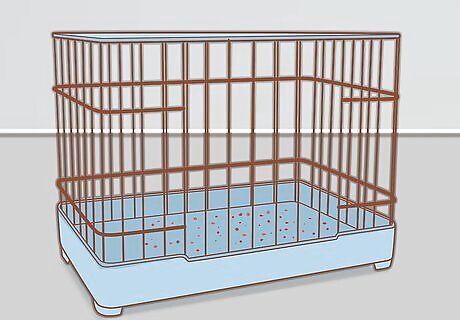
Check for clusters of small red spots in your bird’s cage. Mites are very small, about 1mm in length and are semi transparent until they ingest blood. They then turn bright red or black. One way to identify a mite infestation is to check your bird’s cage for clusters of small red or black spots. Watch them to see if they move after 5 minutes, as mites are mobile and tend to crawl around looking for their host.

Note if you have small bites on your body. Your bird can transfer mites to you very easily, and you may experience symptoms of a mite infestation as you care and live with your bird. You may have raised or reddish bites on your body, especially around your mouth and nose.

Be aware of any crawling sensations at night when you are in bed. You may also experience crawling sensations on your skin at night, as this is when mites come out to feed. Keep in mind mites can feed on humans, but they will not live on humans, as they cannot complete their life cycle via a human host. They also do not transmit any infectious diseases to humans or birds, but you may develop a secondary infection due to scratching and skin irritation.
Treating the Mites
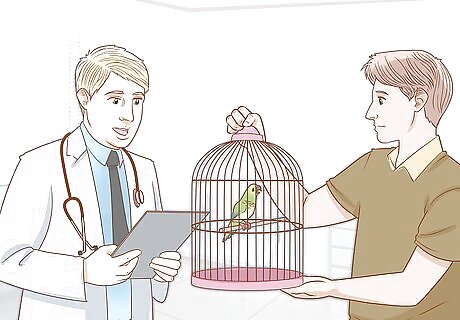
Bring the bird in his cage to the vet for treatment. Mites will not be visible on your bird during the daytime, but your vet can check the cage to confirm there is a mite infestation. Keep in mind mites live on your bird, not in your bird’s cage. But depending on the extent of the infestation, you may need to also treat your bird’s cage to remove the mites.
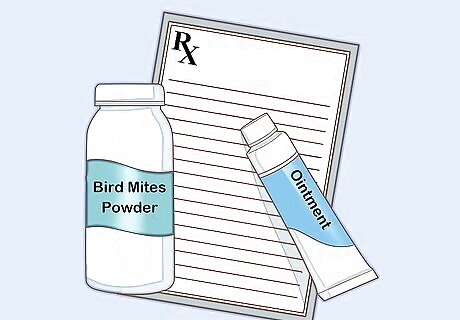
Get a prescription for topical medications, according to your bird’s needs. The most effective medications for mite will need to be dosed specifically for your bird’s body weight and breed, so always use a prescribed medication to treat mites. Over the counter mite medications will not provide long term treatment of the infestation and may not be effective for your bird. Your vet will prescribe a topical treatment or possibly injections to help treat the mite infestation on your bird. You will also need to schedule follow-up appointments with your vet to ensure the mites have been eradicated from your bird.
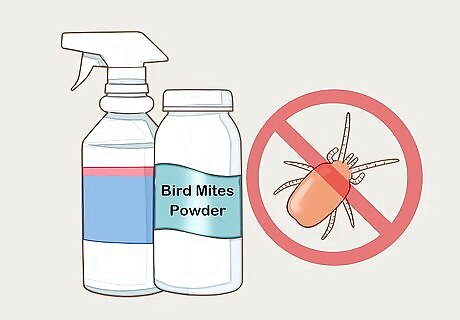
Treat all birds in the household for mites. Scaly mites in birds are very contagious and it is important to treat all your birds if one bird is diagnosed with mites. This is a good precaution in the event the infected bird somehow contaminates the other birds in the household.

Avoid using mite protectors. Mite protectors are often found in pet stores and online, and claim to prevent or control mite infestations. But they are not always helpful at preventing an infestation and many of these products contain paradichlorobenzene, or mothballs, with can be harmful to your bird and can cause liver damage, respiratory tract problems, depression and increased risk of some cancers. Exposing your bird to these fumes can be dangerous, so avoid them.
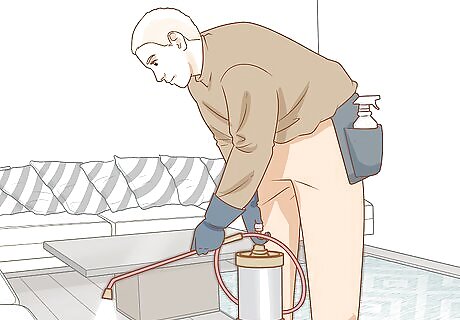
Consider hiring an exterminator to remove mites from your home. Some pest control companies are qualified to treat bird mites in your home. If the infestation is extensive, consider hiring an exterminator sooner than later so the infestation does not get any worse. Some companies will inspect your home free of charge and give you an estimate of the extermination. Try to find a pest control company that specializes in bird mites as they will use the correct chemicals to remove the mites and prevent another infestation. You can access a database of qualified exterminators here.










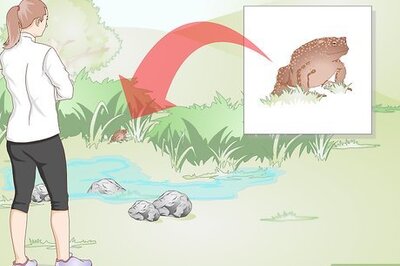

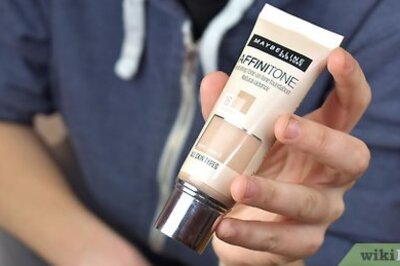
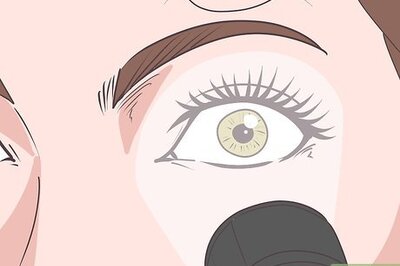






Comments
0 comment